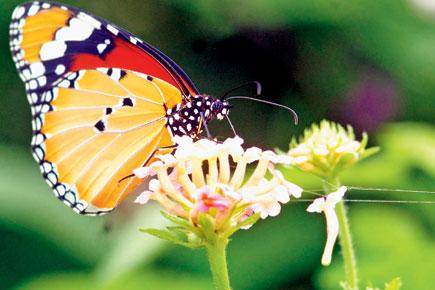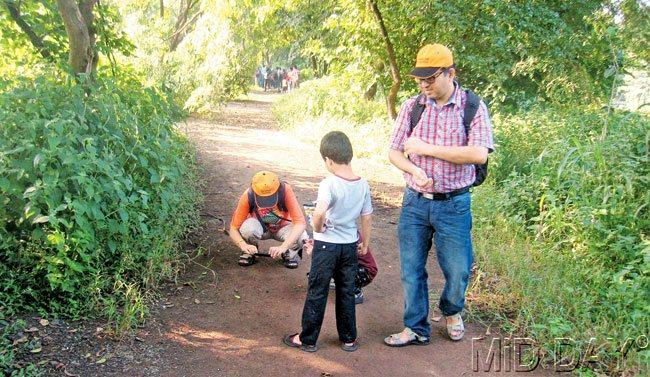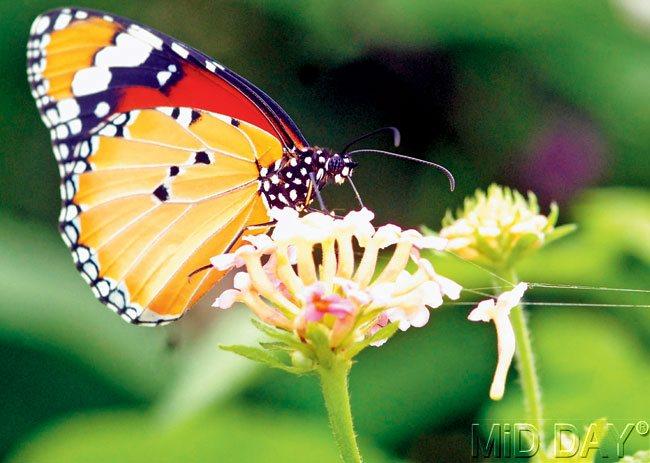A lotus in the middle of the marsh — that is what the Maharashtra Nature Park (MNP) reminds you of

The butterfly population inside the park is impressive
 A lotus in the middle of the marsh — that is what the Maharashtra Nature Park (MNP) reminds you of.
A lotus in the middle of the marsh — that is what the Maharashtra Nature Park (MNP) reminds you of.
ADVERTISEMENT
Standing close to the counter of the MNP, looking at a couple of workers harvesting honey bees, it is hard to believe that this used to be a garbage dump. So, everything is redeemable.
Flowing past the Mithi River, today, the MNP is 37 acres of green woodland.
The MNP has recorded close to 300 varieties of plants. And, thanks to the evergreen mangrove forest, 115 species of birds.
Also, a host of butterflies, insects and fungi thrive in the park, muting the vehicular sounds from the Bandra-Sion Link Road and cutting the air pollution by half.
Once inside the park it is hard to believe that you are on the brink of possibly, Asia’s largest slum.

The butterfly population inside the park is impressive
Organised by the Bombay Natural History Society (BNHS), the group of amateur photographers and a bunch of parents and their children, move towards the rainwater-harvesting area and head to the butterfly park area. The BNHS and the MNP guide patiently show the kids through what would easily take three to four hours to cover.

Kids look for beetles inside the park. Pic/Atul Kamble
We first spot the Common Crow butterfly. But there are so many here that it’s easy to spew names: the Mormon, Commander, Black Rajah, Blue Tiger, Blue Oak leaf, Lime Butterfly, White Orange tip, Common Rose, Psyche, The Pioneer, Baronet and the Castor butterfly are among the many fluttering unheeded by the crowd watching them.
Zooming around also purposefully are the Indian Rock Bee (the largest bee in India), Bumble Bee, dragonflies and damselflies (relative of dragonfly) like the Coromandel Marsh Dart, the Spiney Back Spider and the Pumpkin Beetle. The guide tells us that the damselfly are those that eat mosquitoes and mosquito larvae as the group look at the plain, darting, needle-like damselfly with much respect.
The moist woody forest is full of millipedes; you can’t help worrying about trampling them. Among the trees, we identify the Red Silk Cotton Tree, the Ashoka Tree, Balloon Plant, Ficus Benjamin, Teak, Golden Apple Tree, Lasora, Bottle Brusk Oak, Flame of the Forest, Devil’s Tree, Kadamba and Soccer Ball Tree, as well as laden bushes and fragrant herbs.
We see birds such as the Greater Coucal flying from one tree to another and listen to the call of a Tailorbird (the kids are told how the tailorbird makes its nest). Closer to the pond we see the Cattle Egret, the Common Moor Hen, the Cormorant, the Warbler and the Common Bronzewing.
 Subscribe today by clicking the link and stay updated with the latest news!" Click here!
Subscribe today by clicking the link and stay updated with the latest news!" Click here!






